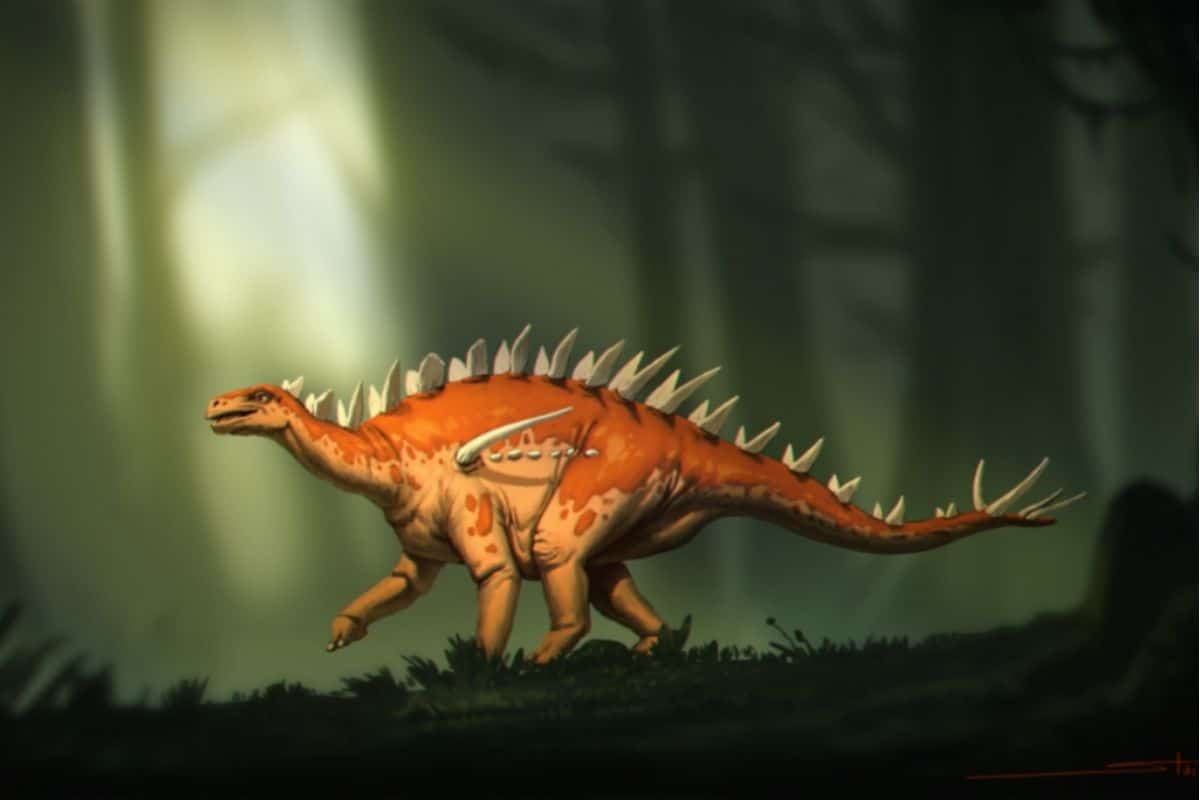

The fossil remains excavated in China may be the oldest in the world.
Researchers have unearthed the remains of an ancient and relatively small Stegosaurus in China’s Chongqing region. The dinosaur in question is believed to have roamed the Earth about 168 million years ago, during the Middle Jurassic era. It’s an interesting find. Little is known about the evolution of stegosaurs. But thanks to the discovery of the new species, described in the journal Journal of Vertebrate Paleontologymore and more puzzle pieces begin to fall into place.
Stegosaurs are seen as heavy herbivores. They probably weighed around 1,600 kilograms, making their weight comparable to that of a modern-day small rhinoceros. Stegosaurus is also one of the most famous dinosaurs because of its striking appearance. Its best-known members include Huayangosaurus (one of the most primitive stegosaurs), Gigantspinosaurus (known for its massive shoulder spines), and Miragaia (especially noted for its extremely long neck). Both juvenile and adult specimens had spines on the tail and large, pointed bony plates on their backs. Fossilized remains of stegosaurs have been found on all continents except Antarctica and Australia. To date, 14 different species have been discovered.
In the Chinese soil, researchers found bones of the back, shoulder, thigh, feet and ribs, among other things, as well as various armor plates. The remains, after analysis, appear to belong to a rather petite, but terrifying-looking stegosaurus, which measured only 2.8 meters from nose to tail. However, scientists cannot say for sure whether these fossil remains belong to an adult or a baby dinosaur.
very old
They do know that it is an ancient stegosaurus, which, as mentioned, sauntered over the globe 168 million years ago. It means that the dinosaur lived during the Bajocian – a time cut in the Middle Jurassic. And that’s much earlier than any other stegosaurs discovered to date. The newly discovered fossil remains are the oldest of a stegosaurus ever found in Asia and could also be the oldest in the world. This suggests that stegosaurs may have come from Asia.
Name
The team appropriately named the newly discovered species Bashanosaurus primitive datum. ‘bashan’ is a reference to the original name of the Chinese area of Chongqing where the dinosaur was found, while ‘primitive’ Latin is for ‘first’.
Evolution
The find of Bashanosaurus primitive could tell us more about exactly how stegosaurs evolved—something we know very little about yet. Although the dinosaur appears to have several features in common with the earliest stegosaurs – such as huayangosaurus and giant spinosaurus and early branched Thyreophora – other features are unique. For example, its shoulder blades are smaller and less developed, its femur is slightly different, and its armor plates curve outward and are thicker than the plates on the backs of its later relatives. At the same time, Bashanosaurus primitive also has striking resemblance to some of the first armored dinosaurs, dating back more than 20 million years. For example, the dorsal vertebrae are similar to Scelidosaurus† an armored and herbivorous dinosaur that lived during the early Jurassic.
According to the researchers, the find sheds light on how stegosaurs evolved and how they relate to each other. “The discovery of this Middle Jurassic stegosaur adds to a growing body of evidence that the group evolved in the Early Middle Jurassic — or perhaps even the Early Jurassic,” Susannah Maidment surmises. “China appears to have been a hot spot for the diversity of stegosaurs, which eventually gave rise to the numerous species we know today.”
Source material:
†New species of stegosaur is oldest discovered in Asia, and possibly the world” – Taylor & Francis Group
Image at the top of this article: Banana Art Studio